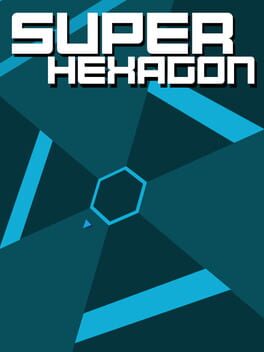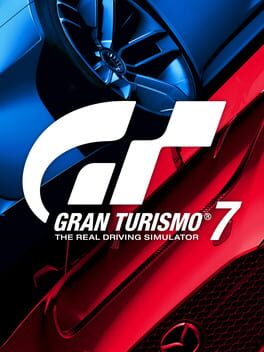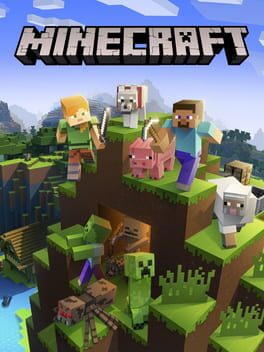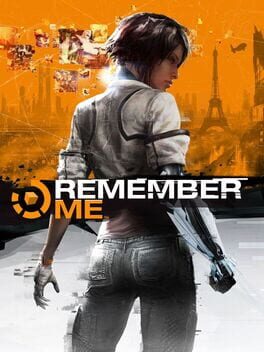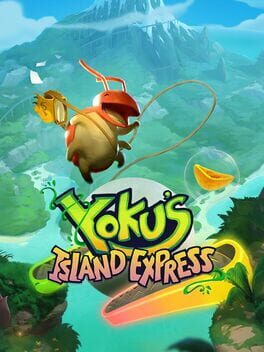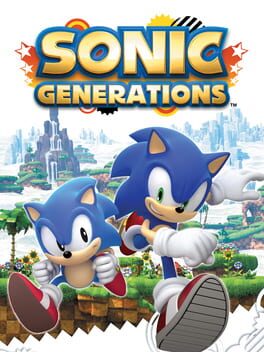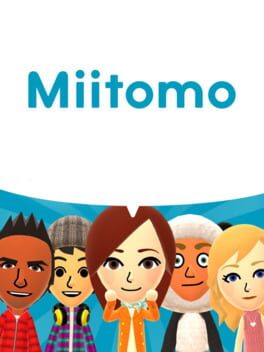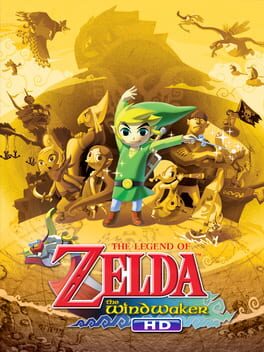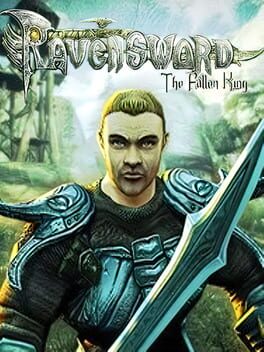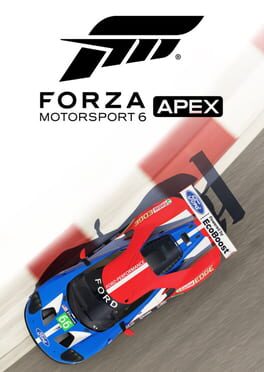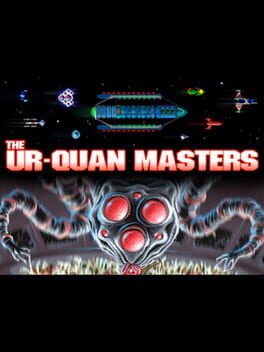ThruLidlessEye
2012
2022
Everything about its design is masterfully curated and refined, including the clever ways in which it is deeply aggravating and flawed. The gamefeel is so intrinsically enjoyable that I don't care that the entire structure of the game is built on training you to spend real money on fake cars. The UI design is so clever that I knew it couldn't be a new concept that anyone had for this installment. Every time I get one of those "gacha" style lootbox tickets, they show you five possible things you might get, I literally always get the smallest possible reward, and I must assume this is by design. I saved up for the fancy car I wanted only to realize A: the car looks cool but it actually kind of sucks to drive, and B: I'm playing this game in the minimal first person view anyway, I'm never gonna see that shit. Probably the best PlayStation game of the year, but it likely won't be remembered that way when the servers go down.
2022
Splatoon is really strange because, in a vacuum, these three games make up what is probably Nintendo's most flatly iterative series. The aesthetic, the design sensibilities, the story, the structure, from top to bottom it's the same; you get some new single-player levels, some new multi-player maps, some new weapons, maybe a new game mode if you're lucky (it's a card game in this one). It makes sense why someone might be disappointed by this, especially considering how novel the first game seemed on release. It may be more of the same, but I think it's a winning formula. 7 years later I still find this both visually and mechanically more interesting than a lot of other big shooters on the market.
2011
2013
2011
Sonic Generations doesn't have enough paint to cover its empty, atemporal, white void.
Right off the bat: Sonic the Hedgehog cannot get away with a "bad guy interrupts lunch" plot. You can do that in a game like New Super Mario Bros. which openly is not even trying to have a story, but even Sonic Generations' rather barebones narrative has a cutscene with a full voice-acted conversation after every zone.
When you load a game from the main menu, sonic jumps out of the logo and free-falls down; if this seamlessly led into the level select, this would be a neat effect, but the game cuts to a loading screen instead. This is particularly ludicrous on modern machines since the loading screen lasts less than a second and a smooth transition would probably be easily achievable if it weren't for the fact we're dealing with PS360 code. The same thing happens when switching between Classic and Modern Sonic. There's just a lot of weird little things like this that make navigating the game feel clunky.
Classic Sonic feels bad. It's not as simple as "it's not like the old games" which I know had been a conversation back when Sonic 4 came out. Maybe they don't need to be exactly the same, but there were certain things that were possible in the Genesis games that were just good: for example, you can't spin-dash and then immediately jump to clear a large gap. Some of this feels like it's to prevent short-term "sequence breaking" or clipping out-of-bounds considering how limited and on-rails a lot of the game is, but a lot of it just doesn't feel good in general. Every physics movement, from Sonic's jump arc to the way that rings bounce, feels like they just stuck with the untuned default options of whatever engine they used.
I really hate to bring up something this nitpicky but inconsistencies like this have been bugging me since Sonic 1. Why are certain obstacles instant death? There are these spike balls in some of the underwater sections that just kill you in one hit no matter what. Why is literally anything other than a bottomless pit a one hit kill? The game is even pretty lenient in other aspects, for example it's completely possible to survive getting crushed. It just doesn't make sense.
Why does Modern Sonic have 2D sections at all? The two characters aren't differentiated enough. The moments where Modern Sonic is actually allowed to be Modern Sonic are probably the best parts of the game, but just like with every other 3D Sonic, the best part of the game is buried under hours of filler.
The selection of zones chosen for the game is bizarre, I'm not surprised that they were apparently chosen by a poll. 4 of the 9 zones are city levels, 3 of them are basically green hill variants. I get that they picked one level from every major game from beginning to then-present, but it's also weird how almost half of this game's levels are taken from Adventure-style Sonic games, despite neither the Classic nor Modern versions of the stages really providing this gameplay. City Escape is probably the most true to the original, but I don't understand how there are people who compare this to a greatest hits collection, at least not in terms of gameplay. To me it just reveals that this is a surface level celebration from a company that still doesn't really get what's good about these old games, and still won't another decade later.
Playing this so soon after Chorvs had me feeling a lot of the same ways that I did with that game. Both games give the player a number of tools, but neither game really gives the player engaging ways to try to experiment and learn them. You never have any space to truly play, you are never given any room for creativity. The level design is so strictly railroaded that half the time when I would try to jump to what I assumed was an alternate path I would just fall into a pit, or perhaps even more insulting, hit an invisible wall and continue being directed down the same rollercoaster ride. The entire game is a sequence of checks where you use the one correct move at the one correct time in the one correct way, or you get shunted down to the bottom path.
And on the subject of the branching paths, I don't like the way they're often handled. Many of the "bottom" and "top" paths are moreso "foreground" and "background" paths, with background paths typically being visible from the foreground. This just makes the play area visually muddy, with the player no longer being able to rely on gut reactions to fast moving obstacles. Given that the foreground areas tend to seem like bottom-path equivalents, at absolute best this seems like an intentional punishment.
The most fun I had with Sonic Generations was singing City Escape to myself during levels that weren't City Escape.
There have definitely been way worse Sonic games, the poor rat has had some serious duds. That said, with all the hype around it, if this is supposed to be anything close to the peak of what the past couple decades of Sonic have had to offer, I can't blame anyone who walked away from this saying "Sonic was never good".
Right off the bat: Sonic the Hedgehog cannot get away with a "bad guy interrupts lunch" plot. You can do that in a game like New Super Mario Bros. which openly is not even trying to have a story, but even Sonic Generations' rather barebones narrative has a cutscene with a full voice-acted conversation after every zone.
When you load a game from the main menu, sonic jumps out of the logo and free-falls down; if this seamlessly led into the level select, this would be a neat effect, but the game cuts to a loading screen instead. This is particularly ludicrous on modern machines since the loading screen lasts less than a second and a smooth transition would probably be easily achievable if it weren't for the fact we're dealing with PS360 code. The same thing happens when switching between Classic and Modern Sonic. There's just a lot of weird little things like this that make navigating the game feel clunky.
Classic Sonic feels bad. It's not as simple as "it's not like the old games" which I know had been a conversation back when Sonic 4 came out. Maybe they don't need to be exactly the same, but there were certain things that were possible in the Genesis games that were just good: for example, you can't spin-dash and then immediately jump to clear a large gap. Some of this feels like it's to prevent short-term "sequence breaking" or clipping out-of-bounds considering how limited and on-rails a lot of the game is, but a lot of it just doesn't feel good in general. Every physics movement, from Sonic's jump arc to the way that rings bounce, feels like they just stuck with the untuned default options of whatever engine they used.
I really hate to bring up something this nitpicky but inconsistencies like this have been bugging me since Sonic 1. Why are certain obstacles instant death? There are these spike balls in some of the underwater sections that just kill you in one hit no matter what. Why is literally anything other than a bottomless pit a one hit kill? The game is even pretty lenient in other aspects, for example it's completely possible to survive getting crushed. It just doesn't make sense.
Why does Modern Sonic have 2D sections at all? The two characters aren't differentiated enough. The moments where Modern Sonic is actually allowed to be Modern Sonic are probably the best parts of the game, but just like with every other 3D Sonic, the best part of the game is buried under hours of filler.
The selection of zones chosen for the game is bizarre, I'm not surprised that they were apparently chosen by a poll. 4 of the 9 zones are city levels, 3 of them are basically green hill variants. I get that they picked one level from every major game from beginning to then-present, but it's also weird how almost half of this game's levels are taken from Adventure-style Sonic games, despite neither the Classic nor Modern versions of the stages really providing this gameplay. City Escape is probably the most true to the original, but I don't understand how there are people who compare this to a greatest hits collection, at least not in terms of gameplay. To me it just reveals that this is a surface level celebration from a company that still doesn't really get what's good about these old games, and still won't another decade later.
Playing this so soon after Chorvs had me feeling a lot of the same ways that I did with that game. Both games give the player a number of tools, but neither game really gives the player engaging ways to try to experiment and learn them. You never have any space to truly play, you are never given any room for creativity. The level design is so strictly railroaded that half the time when I would try to jump to what I assumed was an alternate path I would just fall into a pit, or perhaps even more insulting, hit an invisible wall and continue being directed down the same rollercoaster ride. The entire game is a sequence of checks where you use the one correct move at the one correct time in the one correct way, or you get shunted down to the bottom path.
And on the subject of the branching paths, I don't like the way they're often handled. Many of the "bottom" and "top" paths are moreso "foreground" and "background" paths, with background paths typically being visible from the foreground. This just makes the play area visually muddy, with the player no longer being able to rely on gut reactions to fast moving obstacles. Given that the foreground areas tend to seem like bottom-path equivalents, at absolute best this seems like an intentional punishment.
The most fun I had with Sonic Generations was singing City Escape to myself during levels that weren't City Escape.
There have definitely been way worse Sonic games, the poor rat has had some serious duds. That said, with all the hype around it, if this is supposed to be anything close to the peak of what the past couple decades of Sonic have had to offer, I can't blame anyone who walked away from this saying "Sonic was never good".
2016
Legitimately the most fun I've ever had with a social game. Generated a veritable bevy of meme content among my friends at the time. Understandably, it didn't have the longest shelf life, and I'm not surprised that it has been long survived by each of Nintendo's other forays into mobile gaming. Don't cry because it's over, smile because it happened, I suppose.
The Legend of Zelda: The Wind Waker is uhh.... remember that ad where the guy's enunciation implied that Zelda was the wind waker? Or... I can't find it online, have I been Berenstein'ed? Anyway...
The gameplay loop of Wind Waker is defined by two elements: it is a game that, moreso than any other 3D Zelda, is returning to the roots of the series, and it is a game that was rushed to meet a deadline with gaping holes barely patched up. The result, somehow, is a game that feels shockingly similar to the modern open-world game in terms of structure. Somehow too, it took only a few small changes in this more recent version to make Wind Waker one of the best open-world games ever made, if it is to be considered a part of the genre.
Wind Waker HD is flat out the best looking Zelda game, and it will probably continue to be the best looking Zelda game even after the release of the presently untitled sequel to Breath of the Wild, both because of its superior fidelity and its incredible aesthetic. Games like Four Swords Adventures and Minish Cap already felt so full-fledged that rather than the top-down games feeling like de-makes of Wind Waker, the original Wind Waker instead felt like the impossible, imagined, ideal version of its 2D contemporaries; the resolution bump and new lighting system may be a substantial enough change to alienate purists, but I think these additions are for the better.
Wind Waker's aesthetic was originally more of a point of contention, and frankly it's not hard to see why. Something important to keep in mind is that even though Ocarina of Time obviously had an art style influenced by its concept illustrations, just check out what's sitting next to it in the top rated games of all time on Metacritic; Tony Hawk 2 and Soul Caliber, games which today would not even be remotely considered the best in their series, let alone contenders for best game ever. The truth is that these games were so well-received in large part because they were some of the first games to showcase realistically proportioned human figures. The visuals of Ocarina of Time, in 1998, could pass for "realistic". This is the exact reason why some will look at games like Dark Souls and exclaim "this is what Zelda should've looked like!" Though, in the same sense of course, it should be noted that Zelda was always going for a more or less illustrative aesthetic, and that while Wind Waker was certainly a shift in style, it wasn't as large a leap as many may have felt it was at the time.
Wind Waker is one of the best feeling 3D Zelda games to play. The way that it handles is more fluid than any other game in the series, and while I may personally prefer the slight amount of friction and additional complexity that Twilight Princess added to the mix, I think that this effortless feeling is completely appropriate for this game's cartoon vibe.
Toon Link is basically the best character Nintendo has made since at least the turn of the millennium, and he is unambiguously without a shred of doubt the best incarnation of Link. Not only is he stupid cute, he is more physically expressive and consistently shows a much wider range of emotions than most cute Nintendo characters ever would. It's like if Pikachu did the Excalibur face, real ones will know what I'm talking about.
My biggest issue with the game, and perhaps the only thing that really keeps it from being a 10/10, is how reluctant it is to just let you go out and do stuff. You can't freely explore until you've cleared two of the game's relatively few dungeons. You can't fast-travel until you have the item from the third dungeon. Even then, tons of the optional areas require that you have items or abilities from late enough in the game that, aside from filling out the map so you know where everything is (and hitting the submarines and outposts for the handful of items hidden there), there's not much reason to explore a lot of the map until the late-game. It has pretty much the opposite structural problem as Breath of the Wild: they take too long to truly let you loose, and they don't fill out your toolset fast enough.
Also Breath of the Wild has ruined the koroks. :( they are yucky now :((((
The gameplay loop of Wind Waker is defined by two elements: it is a game that, moreso than any other 3D Zelda, is returning to the roots of the series, and it is a game that was rushed to meet a deadline with gaping holes barely patched up. The result, somehow, is a game that feels shockingly similar to the modern open-world game in terms of structure. Somehow too, it took only a few small changes in this more recent version to make Wind Waker one of the best open-world games ever made, if it is to be considered a part of the genre.
Wind Waker HD is flat out the best looking Zelda game, and it will probably continue to be the best looking Zelda game even after the release of the presently untitled sequel to Breath of the Wild, both because of its superior fidelity and its incredible aesthetic. Games like Four Swords Adventures and Minish Cap already felt so full-fledged that rather than the top-down games feeling like de-makes of Wind Waker, the original Wind Waker instead felt like the impossible, imagined, ideal version of its 2D contemporaries; the resolution bump and new lighting system may be a substantial enough change to alienate purists, but I think these additions are for the better.
Wind Waker's aesthetic was originally more of a point of contention, and frankly it's not hard to see why. Something important to keep in mind is that even though Ocarina of Time obviously had an art style influenced by its concept illustrations, just check out what's sitting next to it in the top rated games of all time on Metacritic; Tony Hawk 2 and Soul Caliber, games which today would not even be remotely considered the best in their series, let alone contenders for best game ever. The truth is that these games were so well-received in large part because they were some of the first games to showcase realistically proportioned human figures. The visuals of Ocarina of Time, in 1998, could pass for "realistic". This is the exact reason why some will look at games like Dark Souls and exclaim "this is what Zelda should've looked like!" Though, in the same sense of course, it should be noted that Zelda was always going for a more or less illustrative aesthetic, and that while Wind Waker was certainly a shift in style, it wasn't as large a leap as many may have felt it was at the time.
Wind Waker is one of the best feeling 3D Zelda games to play. The way that it handles is more fluid than any other game in the series, and while I may personally prefer the slight amount of friction and additional complexity that Twilight Princess added to the mix, I think that this effortless feeling is completely appropriate for this game's cartoon vibe.
Toon Link is basically the best character Nintendo has made since at least the turn of the millennium, and he is unambiguously without a shred of doubt the best incarnation of Link. Not only is he stupid cute, he is more physically expressive and consistently shows a much wider range of emotions than most cute Nintendo characters ever would. It's like if Pikachu did the Excalibur face, real ones will know what I'm talking about.
My biggest issue with the game, and perhaps the only thing that really keeps it from being a 10/10, is how reluctant it is to just let you go out and do stuff. You can't freely explore until you've cleared two of the game's relatively few dungeons. You can't fast-travel until you have the item from the third dungeon. Even then, tons of the optional areas require that you have items or abilities from late enough in the game that, aside from filling out the map so you know where everything is (and hitting the submarines and outposts for the handful of items hidden there), there's not much reason to explore a lot of the map until the late-game. It has pretty much the opposite structural problem as Breath of the Wild: they take too long to truly let you loose, and they don't fill out your toolset fast enough.
Also Breath of the Wild has ruined the koroks. :( they are yucky now :((((
2002
You leave the solar system and, before you even regain control of your vessel, the song explodes.
Intense breakbeats and ethereal synthesizers soon accompanied by acid bass, synthetic pizzicato strings and twinkling digital chimes. The entire screen is filled with a deep, blood red; the same red that envelops the Earth, the force field which serves as a prison here serves to protect your ship. The space around your craft is filled with bursts and streaks of light, what are they? Are they stars whizzing past as you speed by? Are they other ships coming in and out of warp? Are they projectiles volleyed back and forth between the combatants in the war against the Ur-Quan? It stimulates the imagination in a way that more literal or realistic representations couldn't.
Nearly a minute in, after a brief lull, the main theme is re-introduced, the lead instrument slightly detuned, the rest of the instruments now accompanying it; it still signifies danger, but with newfound confidence, adventure. The drums leave the mix completely, bells come in, their sustained reverb buried deep in phaser or chorus. The song has taken on a more meditative quality. The sounds beneath the music have transformed from high pitched whirling wisps to deep growls. Nearly two and half minutes into the song the main theme once again repeats, but now transposed (I don't have a good enough ear to tell if its a key change or different mode or what), it now takes on a sense of pure heroism.
But you won't hear that the first time you hear this song. If you attempt to leave the Sol system before completing the introductory quest, you'll find yourself with insufficient fuel to get anywhere, and nowhere near enough firepower or maneuverability to survive a fight; additionally it seems like at this point in the game the encounter rate is cranked up specifically to discourage you from skipping the opening missions. Even once you can fabricate parts and train crew for your ship, you'll inevitably be making short enough trips at first that you'll only hear the more "dangerous" parts of the song. Even once you upgrade your fuel tanks and start making longer voyages, encounters with enemies will interrupt the music and make the song play from the beginning before you have time to hear the later segments. The player's relationship with the song develops as they progress through the game in what I think is genuinely one of the most magical fusions of gameplay, narrative, and audiovisual artwork in any video game, ever.
I'm utterly shocked that this game isn't more widely known. I myself only found it by chance: a podcast I listen to recommended Ars Technica's "War Stories" interview with one of the developers of Crash Bandicoot, and I decided to watch all of the interviews in the series. Most of these interviews are about technical aspects of the game, challenges faced during development, personal histories of the developers, or behind-the-scenes of the business end of game production. The interview with Paul Reiche and Fred Ford, founders of Toys For Bob, is just them gushing for two hours about a game I had never once heard of beforehand. I look the game up to find that despite its seeming obscurity, it was once often considered in "best game of all time" lists, is widely praised by high profile games industry personnel, and has been free and open source for over twenty years.
This game has the sprawling map and incredible dialogue of a game like Fallout, but is so much more intuitive that it could be played with an NES controller without issue. It has some of the best writing, most memorable characters, and most entertaining voice acting I've ever seen in games; I genuinely cannot even imagine how mind blowing this game must have been in 1994 when this version was released on 3DO. It has one of the best intro sequences of any game from this era, I was instantly hooked. I feel like I've barely dipped my toes into it, its scope is so ridiculous; knowing what happens as time passes in the game I'm genuinely not sure if I could ever beat it without following a walkthrough, but even so I'd say it's worth starting out by exploring blindly and learning about the world. Some day I'm going to actually hunker down and try and squeeze this gem for all it's worth, and it's going to absolutely own my life. Even now, with what relatively few hours I've spent with it, Star Control 2: The Ur-Quan Masters has already had an immense impact on how I view games.
Intense breakbeats and ethereal synthesizers soon accompanied by acid bass, synthetic pizzicato strings and twinkling digital chimes. The entire screen is filled with a deep, blood red; the same red that envelops the Earth, the force field which serves as a prison here serves to protect your ship. The space around your craft is filled with bursts and streaks of light, what are they? Are they stars whizzing past as you speed by? Are they other ships coming in and out of warp? Are they projectiles volleyed back and forth between the combatants in the war against the Ur-Quan? It stimulates the imagination in a way that more literal or realistic representations couldn't.
Nearly a minute in, after a brief lull, the main theme is re-introduced, the lead instrument slightly detuned, the rest of the instruments now accompanying it; it still signifies danger, but with newfound confidence, adventure. The drums leave the mix completely, bells come in, their sustained reverb buried deep in phaser or chorus. The song has taken on a more meditative quality. The sounds beneath the music have transformed from high pitched whirling wisps to deep growls. Nearly two and half minutes into the song the main theme once again repeats, but now transposed (I don't have a good enough ear to tell if its a key change or different mode or what), it now takes on a sense of pure heroism.
But you won't hear that the first time you hear this song. If you attempt to leave the Sol system before completing the introductory quest, you'll find yourself with insufficient fuel to get anywhere, and nowhere near enough firepower or maneuverability to survive a fight; additionally it seems like at this point in the game the encounter rate is cranked up specifically to discourage you from skipping the opening missions. Even once you can fabricate parts and train crew for your ship, you'll inevitably be making short enough trips at first that you'll only hear the more "dangerous" parts of the song. Even once you upgrade your fuel tanks and start making longer voyages, encounters with enemies will interrupt the music and make the song play from the beginning before you have time to hear the later segments. The player's relationship with the song develops as they progress through the game in what I think is genuinely one of the most magical fusions of gameplay, narrative, and audiovisual artwork in any video game, ever.
I'm utterly shocked that this game isn't more widely known. I myself only found it by chance: a podcast I listen to recommended Ars Technica's "War Stories" interview with one of the developers of Crash Bandicoot, and I decided to watch all of the interviews in the series. Most of these interviews are about technical aspects of the game, challenges faced during development, personal histories of the developers, or behind-the-scenes of the business end of game production. The interview with Paul Reiche and Fred Ford, founders of Toys For Bob, is just them gushing for two hours about a game I had never once heard of beforehand. I look the game up to find that despite its seeming obscurity, it was once often considered in "best game of all time" lists, is widely praised by high profile games industry personnel, and has been free and open source for over twenty years.
This game has the sprawling map and incredible dialogue of a game like Fallout, but is so much more intuitive that it could be played with an NES controller without issue. It has some of the best writing, most memorable characters, and most entertaining voice acting I've ever seen in games; I genuinely cannot even imagine how mind blowing this game must have been in 1994 when this version was released on 3DO. It has one of the best intro sequences of any game from this era, I was instantly hooked. I feel like I've barely dipped my toes into it, its scope is so ridiculous; knowing what happens as time passes in the game I'm genuinely not sure if I could ever beat it without following a walkthrough, but even so I'd say it's worth starting out by exploring blindly and learning about the world. Some day I'm going to actually hunker down and try and squeeze this gem for all it's worth, and it's going to absolutely own my life. Even now, with what relatively few hours I've spent with it, Star Control 2: The Ur-Quan Masters has already had an immense impact on how I view games.
